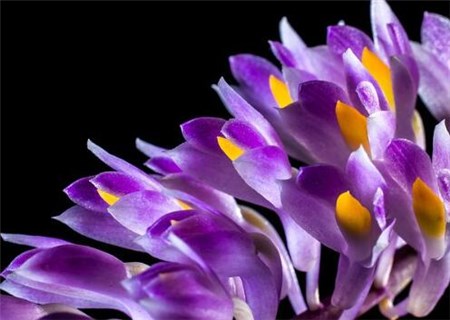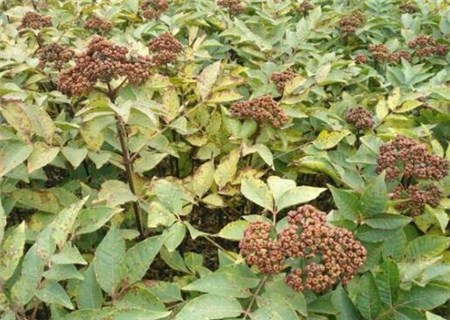How does orchid, one of the four gentlemen, control diseases and insect pests? Why doesn't it smell good? How much is it per plant?
Orchid is herbaceous plant, symbolize weak, elegant. Orchids in artificial culture, due to temperature, humidity, light, air and environmental air pollution, easy to breed diseases and insect pests. Do you know how orchids control pests? Why doesn't it smell? How much does it cost? In the orchid trading market we know the price of orchids, orchids because of their different varieties of prices are different, different varieties of prices are also very different, such as cheap a few dollars can buy a plant, and expensive tens of thousands of yuan or even hundreds of thousands of yuan, some sold to millions of yuan.

1. How orchids control pests and diseases
Orchids are most prone to anthracnose, black spot, sheath blight, rust and other susceptible orchid leaf diseases. For the control of orchid leaf diseases, the following three control methods are adopted:
1. Leaf spray method. Available thiophanate-methyl 1000 times solution, or 800 times solution with carbendazim spray sterilization disease prevention. It can be mixed with dimethoate 1000 times solution to kill insects, but thiophanate-methyl and carbendazim cannot be mixed together, because these two drugs will produce resistance and lose control effect. In the season of high temperature and humidity, it is better to control once every 10 or 15 days according to the proportion of liquid medicine.
2. Root irrigation sterilization method. Serious occurrence of black spot, anthracnose and other diseases of the plant can take root irrigation sterilization measures. Specific practice, available carbendazim 1000 times solution irrigation basin soil or dip basin, while spraying liquid sterilization on leaves, every 1 week for 1 time, the effect is very good.
3. Injection method for eliminating diseases. The method of cutting off the diseased leaves of orchid plants with serious black spot and charcoal disease is usually adopted. Such as rare art grass disease, it is a pity to cut off the leaves, can imitate the principle of medicine, orchid disease leaves for injection in addition to disease, the effect is particularly good.
Specific method: 800 times solution of thiophanate-methyl prepared in advance is inhaled by a disposable 20 ml syringe, and a needle is inserted into the diseased spot of orchid leaves and injected with the liquid medicine at the same time. In each spot are hit on a needle, the effect is obvious. Use a sterile foam pad to prevent needles from sticking into your hand.
Second, how orchids are not fragrant
1. Insufficient light
Orchids like a semi-shady environment, people often think that orchids do not need sunlight to grow, and long-term indoor cultivation or even shade maintenance, so orchids do not get enough sunlight for photosynthesis, timely and occasional scattered light, produce nutrients is also minimal, simply can not create fragrance.
This is a solution, constantly adjust the light, in winter and spring season can be full sunshine maintenance, summer and autumn season on the semi-shade, try not to move outdoors, can be regularly transferred to the tide, sunset window sill.
2. Variety degradation
The change of living environment, or transplanting with other plants, the gene of orchids will be affected to a certain extent. When flowering, orchids may not be able to emit fragrant nectar due to the interference of pollen from other plants.
In order to avoid the degeneration of orchid varieties, do not mix with non-fragrant varieties and other orchids at the same flowering stage to prevent the natural degeneration of pollen.
3, the temperature is too low
Orchids that bloom in winter and spring, such as cold orchids, black orchids, spring orchids, and four seasons orchids, will be affected by the nectar in the orchids because of the lower temperature. When the temperature drops below 0℃, the honeydew freezes and the fragrance does not emanate. When the temperature rises or after temperature adjustment, the aroma can be emitted at a low level.
Adjust the indoor temperature, winter orchid flowering, control the temperature above 5℃, or higher.
4. Lack of fertilizer
Although orchids have little demand for fertilizer, if fertilization is neglected, it will lead to lack of nutrients in orchids, which will easily cause yellow leaves and even flower and bud drop, affecting the growth and development of orchids, so their honey glands naturally cannot produce fragrant nectar.
Apply more phosphorus and potassium fertilizer. In the growth period and flower bud differentiation period, timely topdressing around the autumn equinox.
Time: 2019-03-17 Click:
- Prev

What are the planting methods of Evodia rutaecarpa? What is the difference between Cornus officinalis and dogwood? How can poisoning be saved?
Evodia rutaecarpa belongs to Rutaceae, and the nearly mature fruits of Evodia rutaecarpa and its varieties are commonly used in traditional Chinese medicine. There is a long history of planting in China. So do you know the planting methods of Evodia rutaecarpa? What is the difference between Cornus officinalis and dogwood? How can poisoning be saved? Planting method of Evodia rutaecarpa
- Next

What are the methods of planting potted prickly ash seeds? How to control diseases and insect pests?
Pepper is a commonly used spice, in fact, pepper can also be potted, pepper because the leaves are green and dense with peculiar fragrance, the trunk is Qiu qu, which constitutes the unique ornamental of pepper bonsai. So do you know what are the methods of planting potted prickly ash seeds? How to control diseases and insect pests
Related
- Fuxing push coffee new agricultural production and marketing class: lack of small-scale processing plants
- Jujube rice field leisure farm deep ploughing Yilan for five years to create a space for organic food and play
- Nongyu Farm-A trial of organic papaya for brave women with advanced technology
- Four points for attention in the prevention and control of diseases and insect pests of edible fungi
- How to add nutrient solution to Edible Fungi
- Is there any good way to control edible fungus mites?
- Open Inoculation Technology of Edible Fungi
- Is there any clever way to use fertilizer for edible fungus in winter?
- What agents are used to kill the pathogens of edible fungi in the mushroom shed?
- Rapid drying of Edible Fungi

